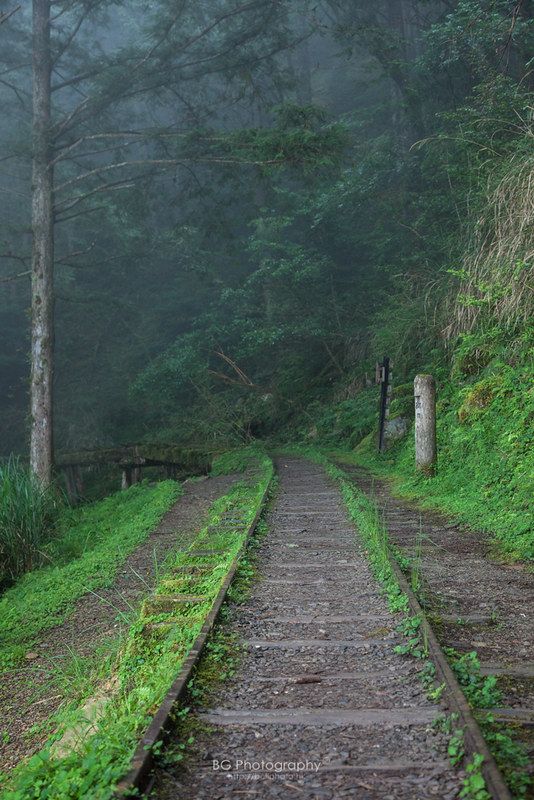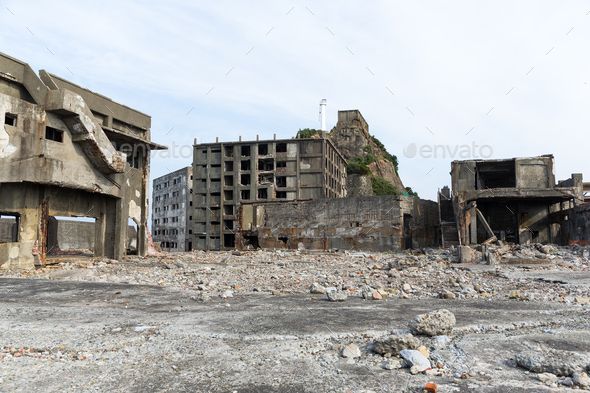Deep within the mountains of central Japan, a forgotten path leads to a place where time seems to stand still. It’s a journey that begins not with a bustling station, but with a whisper from the past—a long, dark tunnel known locally as the “Tunnel of Ghosts.”
The Eerie Gateway
Stretching for what feels like miles, this concrete passage cuts straight through the mountain, its far end a mere pinprick of light. The walls, damp and stained by time, echo every sound. It’s said that if you listen closely, you can hear the faint voices of those who once toiled here, their spirits lingering in the cool, still air. This tunnel is more than just an entry point; it’s a rite of passage, a transition from the modern world to a place left behind by time.
The Path to a Forgotten World

Emerging from the tunnel’s embrace, the world transforms. The path, once paved, now narrows into a winding trail that clings to the mountainside. To one side, a steep drop reveals a breathtaking view of a turquoise river snaking through the valley below. To the other, a dense forest stands guard, its trees ancient and stoic.
This beautiful, rugged trail is a testament to the lives once lived here. The path is roped off to prevent cars from passing—a necessary precaution, as the way becomes too narrow for any modern vehicle. An abandoned, rusted-out car, half-swallowed by the foliage, serves as a stark reminder of this. It’s a precarious parking spot, a relic from a time when someone made their final journey out, leaving their vehicle behind forever.
The area is alive, not with people, but with nature. The ground is littered with fallen persimmons, a feast for the local wildlife—monkeys, bears, and boars who now call this village home. The rustle of leaves could be a gentle breeze or a sign of a creature nearby, a constant reminder that you are a visitor in their domain.
A Village Frozen in Time

Abandoned island of Gunkanjima in nagasaki city of Japan
This incredible place, which has existed since the 16th century, is one of Japan’s most accessible abandoned villages, yet it remains wonderfully preserved. Its last resident departed in 2015, leaving behind a world that feels both recent and ancient.
One of the most fascinating features is the ingenious transport system. A rustic, single-rail trolley, known as a “monorack,” snakes its way up the steep inclines between houses. This simple machine was the lifeline of the village, used to haul supplies, tools, and perhaps even tired residents up the demanding slopes. Another, even older pulley system, made of weathered wood and rusting metal, stands like a skeletal monument to the ingenuity and sheer hard work it took to build and sustain a community in such a challenging environment.
The homes themselves are a poignant sight. Many are boarded up, their interiors holding untold stories. One house, however, has had its kitchen completely collapsed, the roof caved in, exposing its contents to the elements. Another stands open, its traditional tatami rooms and wooden corridors eerily silent, filled with the everyday items of lives abruptly paused.
The Serene Heart of the Village
Perhaps the most breathtaking surprise lies at the village’s highest point. A beautiful set of hand-hewn stone steps leads up to a clearing where a pristine wooden Torii gate stands, marking the entrance to a small, secluded shrine.
Inside the shrine, a traditional taiko drum rests, waiting for a festival that will never come. The space is serene and profoundly moving, a testament to the deep-rooted faith of the community that once thrived here. The craftsmanship and dedication required to build this sacred space so high in the mountains are nothing short of awe-inspiring.
This abandoned village is more than just a collection of old buildings; it is a living museum, a beautiful piece of history nestled in the heart of Japan’s mountains. It’s a place that reminds us of the relentless passage of time and the quiet, enduring power of nature to reclaim what was once hers. A journey here is a step back in time, an experience of beauty, mystery, and a deep respect for the lives that came before.

